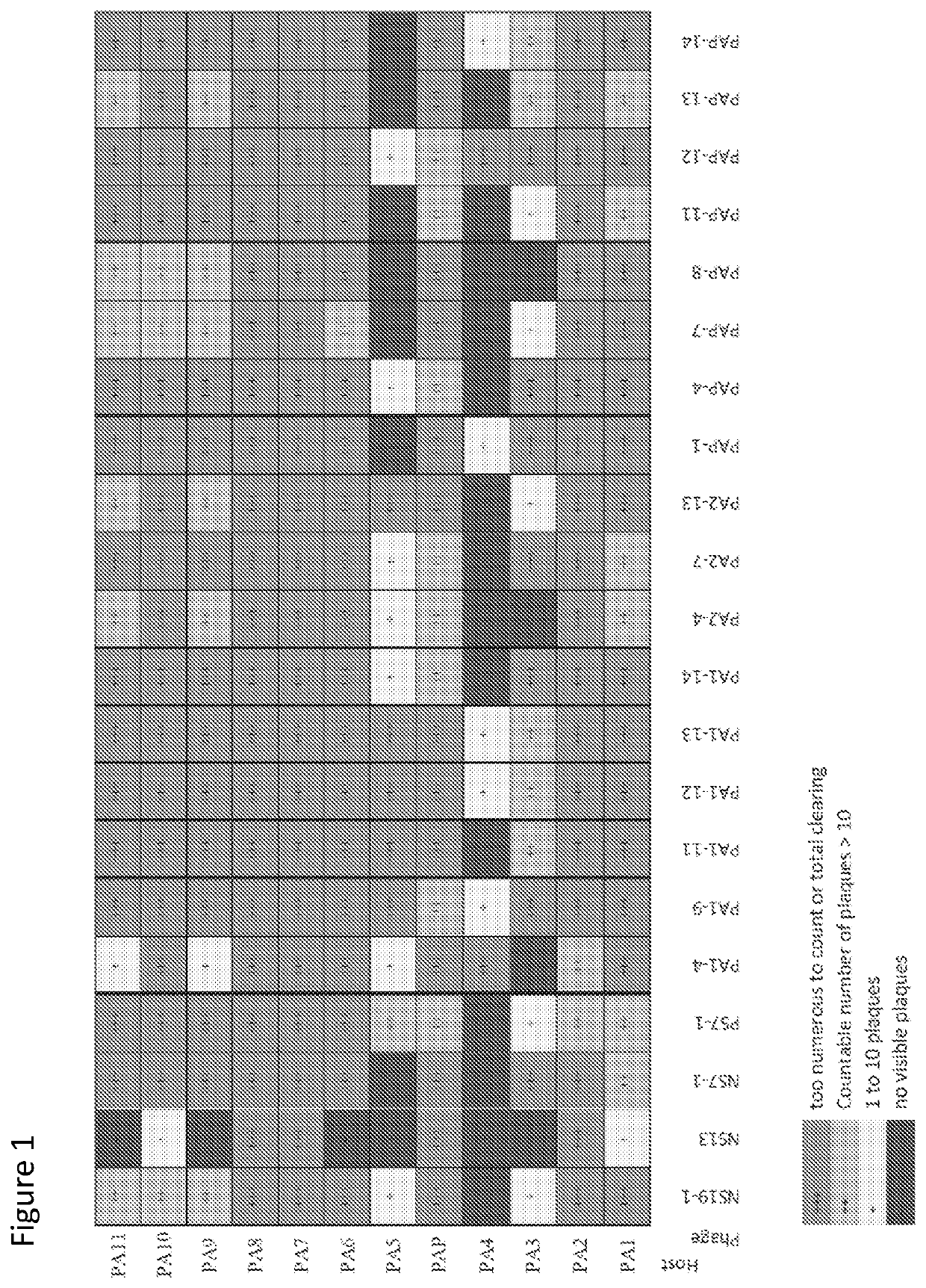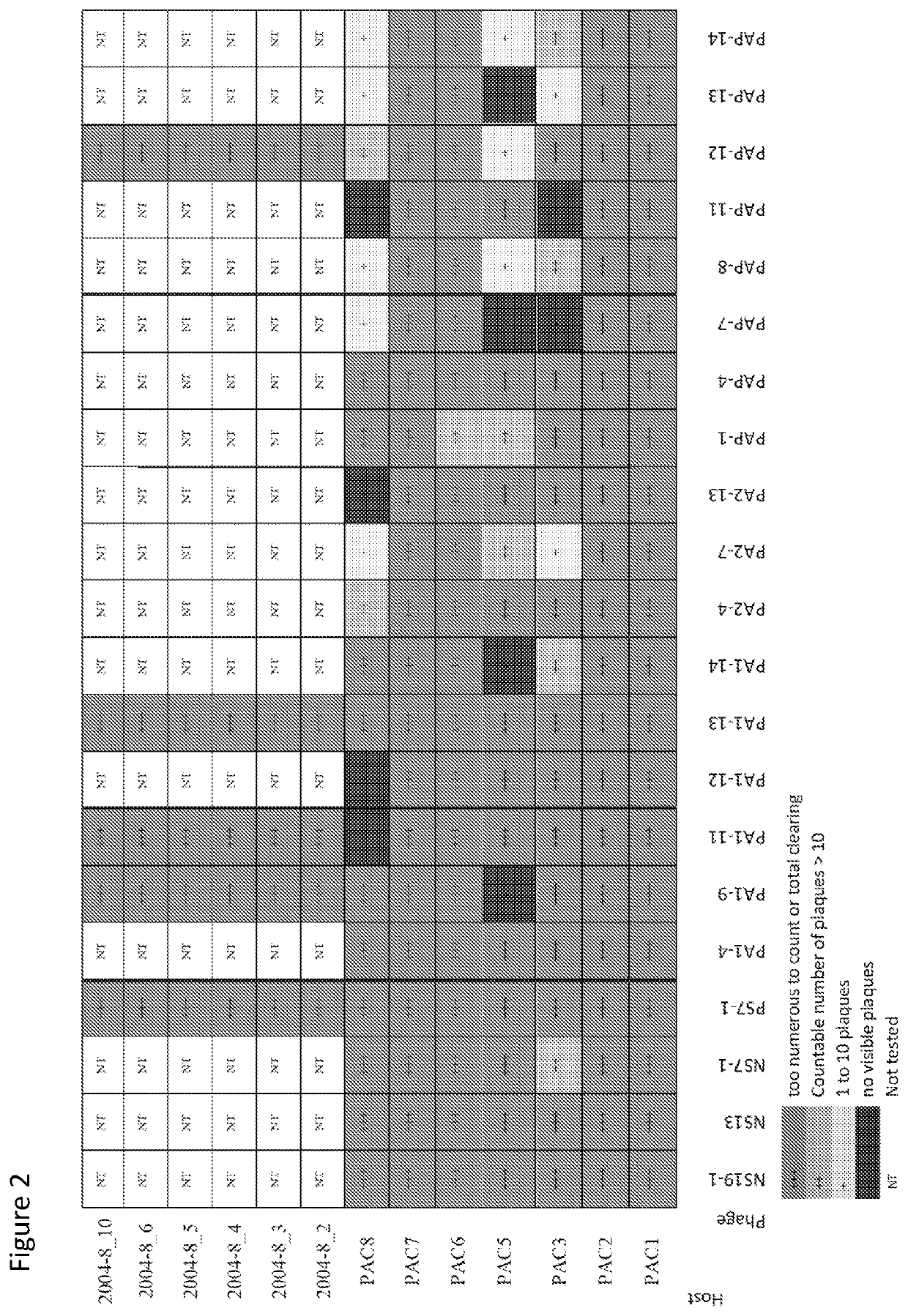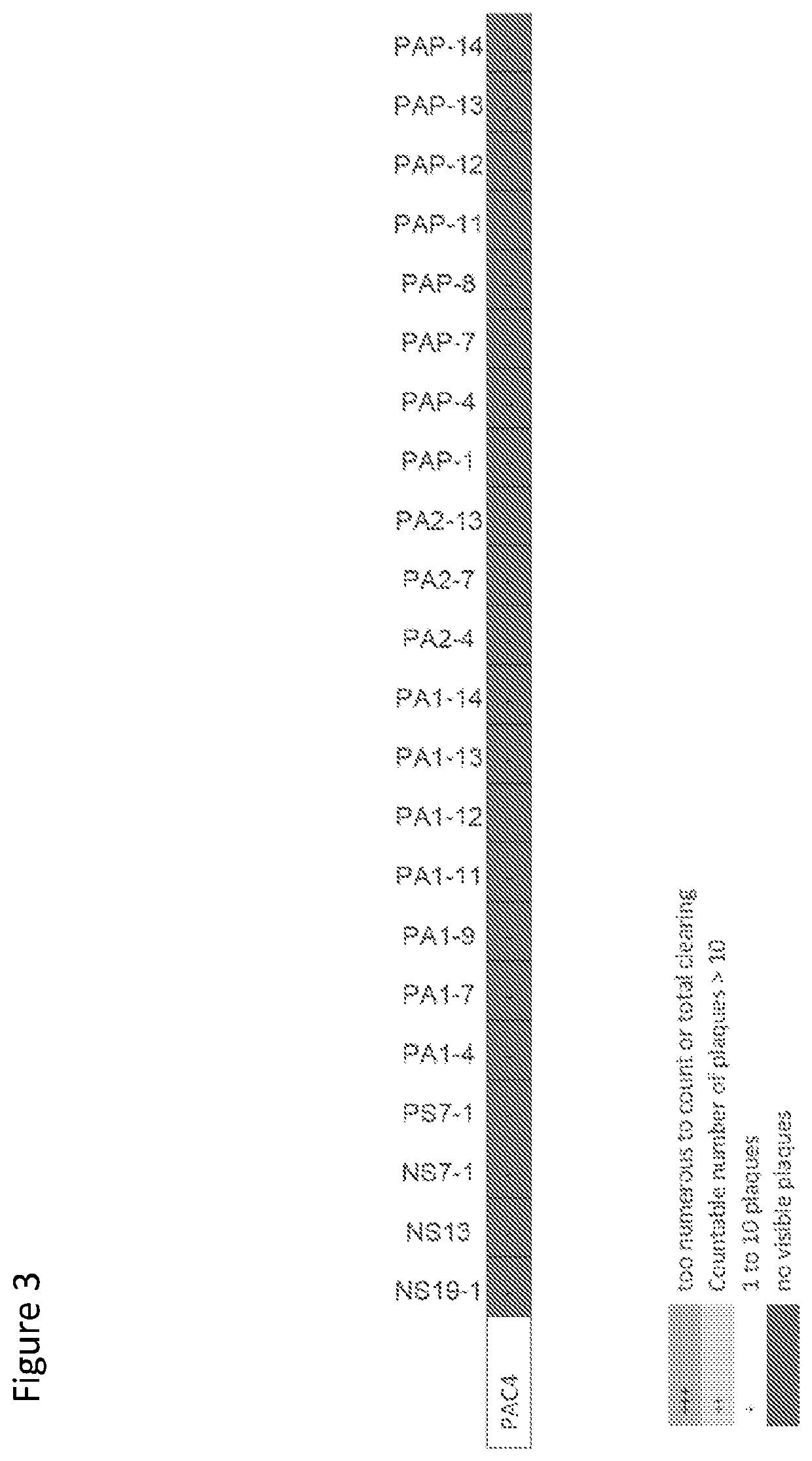Bacteriophage treatment for acne and biofilms
a technology of bacteriophage and acne, applied in the field of bacteriophage compositions, can solve the problems of antibiotic resistance, severe economic burden of implant infection, and risk of colonization
- Summary
- Abstract
- Description
- Claims
- Application Information
AI Technical Summary
Benefits of technology
Problems solved by technology
Method used
Image
Examples
example 1
Sample Sourcing and Processing for Bacteriophage
Materials and Methods
[0149]The candidate bacteriophages are isolated from sewage samples. Batches of sewage that comprise 5-6 raw sewage samples of 400 mL each, obtained from different places at different times are centrifuged and the supernatant is filtered sequentially through Merck (Merck KGaA, Darmstadt, Germany) Millipore glass fiber prefilter APFD, followed by prefilter APFB followed by Express plus PES 47 mm disks 0.45 μm filters using a vacuum filtration system. The pooled sewage sample mixes are concentrated using a Merck Millipore 100 kDa PelliconXL filter system (from 2 L to 20 mL) (Merck KGaA, Darmstadt, Germany). Concentrated sewage samples are then filtered through a 0.45 μm filter and stored at 4° C. Thus, each final sewage phage sample comprises of bacteriophages from 5-6 samples of different geographical origins.
Example 2. P. acnes Bacterial Hosts Used in the Isolation, Production and Host-Range Experiments
Materials an...
example 4
Host Range Analysis of Isolated Phage
Materials and Methods
[0155]Host range analysis for phage isolated on the PA1, PA2, and PAP strains, is performed on twelve P. acnes strains: PA1, PA2, PA3, PA4, PAP, PA5, PA6, PA7, PA8, PA9, PA10, and PA11. Each phage is added (10 μL) to bacterial lawns of P. acnes strains, in 48 well plates by drop assay. Plates are incubated for 24 hrs (37° C.) in anaerobic conditions, after which plaques become visible on the bacterial lawns. Plates with bacterial lawns of PA1, PA2, and PAP, and their respective phage serve as positive control. Host range analysis is done for each of the phage using 10 μL containing 104 phage per well.
Results
[0156]As shown in FIG. 1, where +++ indicates that the plaques are too numerous to count or total clearing, ++ indicates a countable number of plaques greater than 10, + indicates 1 to 10 plaques and − indicates no visible plaques, most P. acnes bacteria are very sensitive to a large number of the newly isolated phage.
Exam...
example 7
Non-Interference Between Phage in Host Infection
Materials and Methods
[0171]Host strain PA4, which is efficiently infected only by phages PA1-4 and PAP-12, is used to test whether there is any negative effect on mixing different P. acnes phage together. Strain PA4 is grown overnight in 4 mL BHIS. The following morning, it is diluted 10× in BHIS and allowed to grow until an OD of ˜0.8. This culture is used as the basis for doing a 48-well plaque assay as described previously. After the 48-well plates containing both bottom and top agar with bacteria are prepared, all of the phages, including PAP-12, are diluted to 106 PFU / mL. These diluted phages are then mixed either in a 1:1 ratio with fresh BHIS medium or 1:1 with the 106 PFU / mL stock of PAP-12. 10 μL of the phage+BHIS combination or phage+PAP-12 combination is used in the plaque assay. After the required overnight incubation, plaques are counted.
Results
[0172]As can be seen in FIG. 5, the presence of additional phage did not interf...
PUM
 Login to View More
Login to View More Abstract
Description
Claims
Application Information
 Login to View More
Login to View More - R&D
- Intellectual Property
- Life Sciences
- Materials
- Tech Scout
- Unparalleled Data Quality
- Higher Quality Content
- 60% Fewer Hallucinations
Browse by: Latest US Patents, China's latest patents, Technical Efficacy Thesaurus, Application Domain, Technology Topic, Popular Technical Reports.
© 2025 PatSnap. All rights reserved.Legal|Privacy policy|Modern Slavery Act Transparency Statement|Sitemap|About US| Contact US: help@patsnap.com



